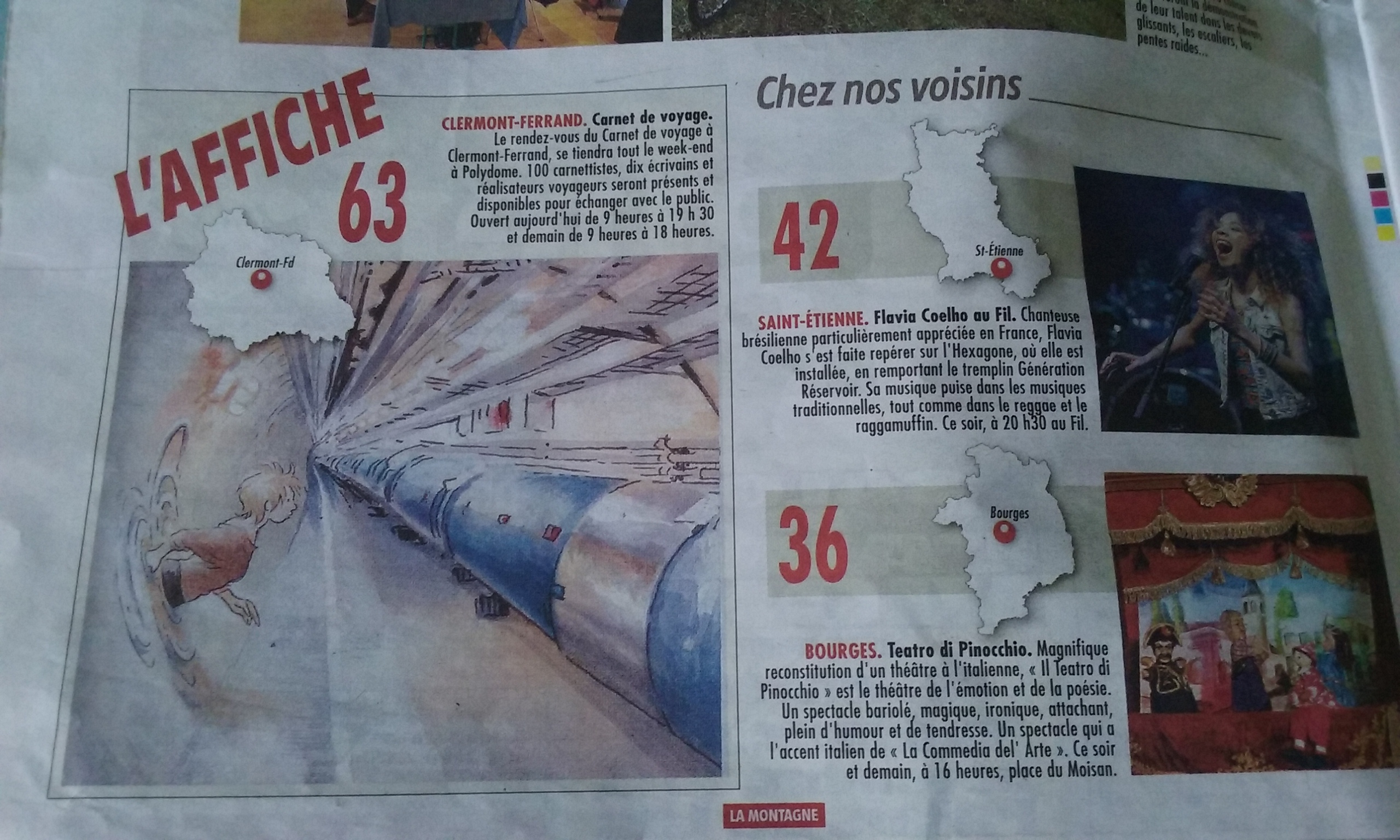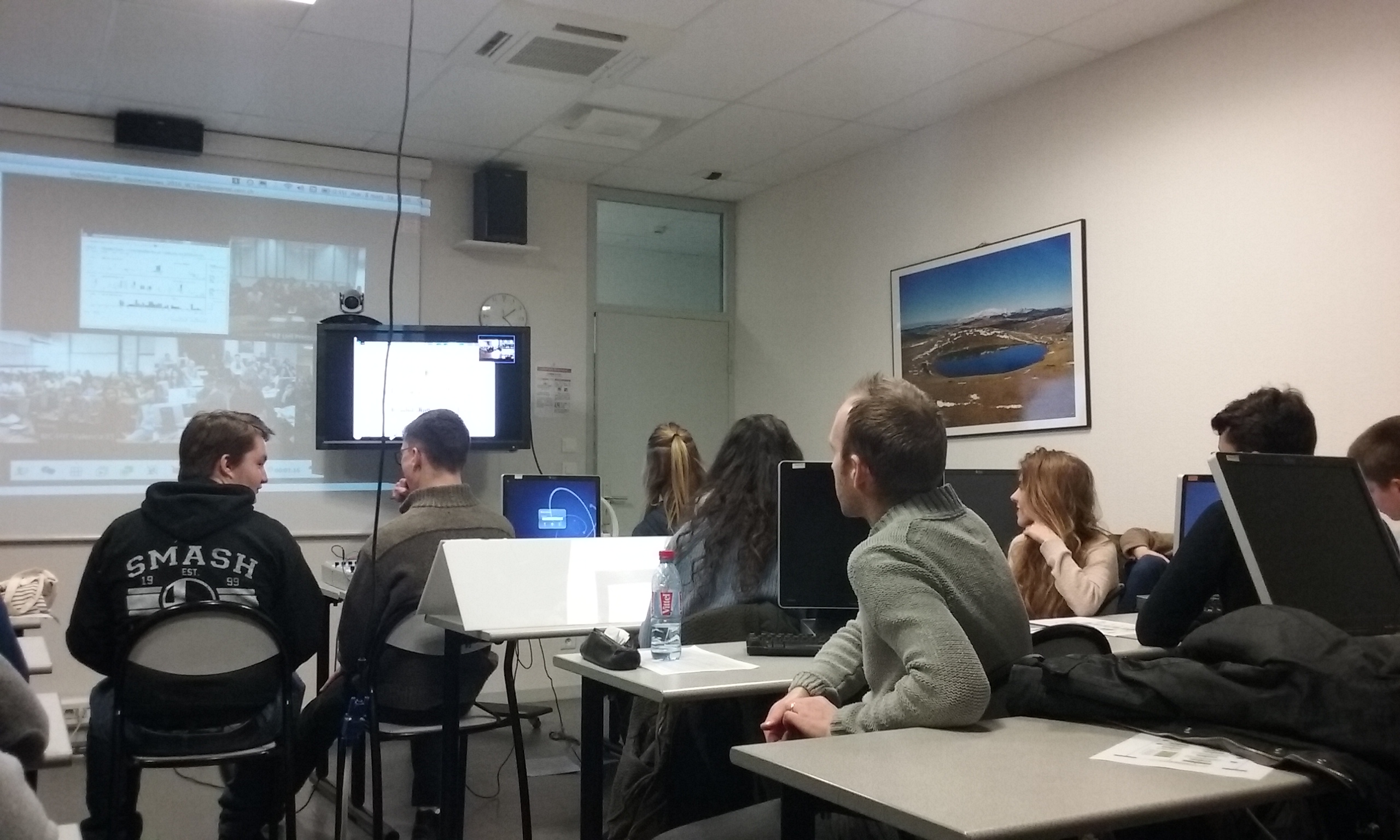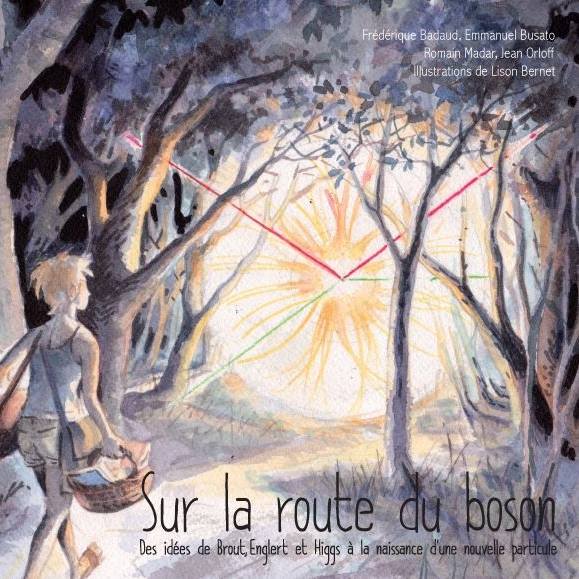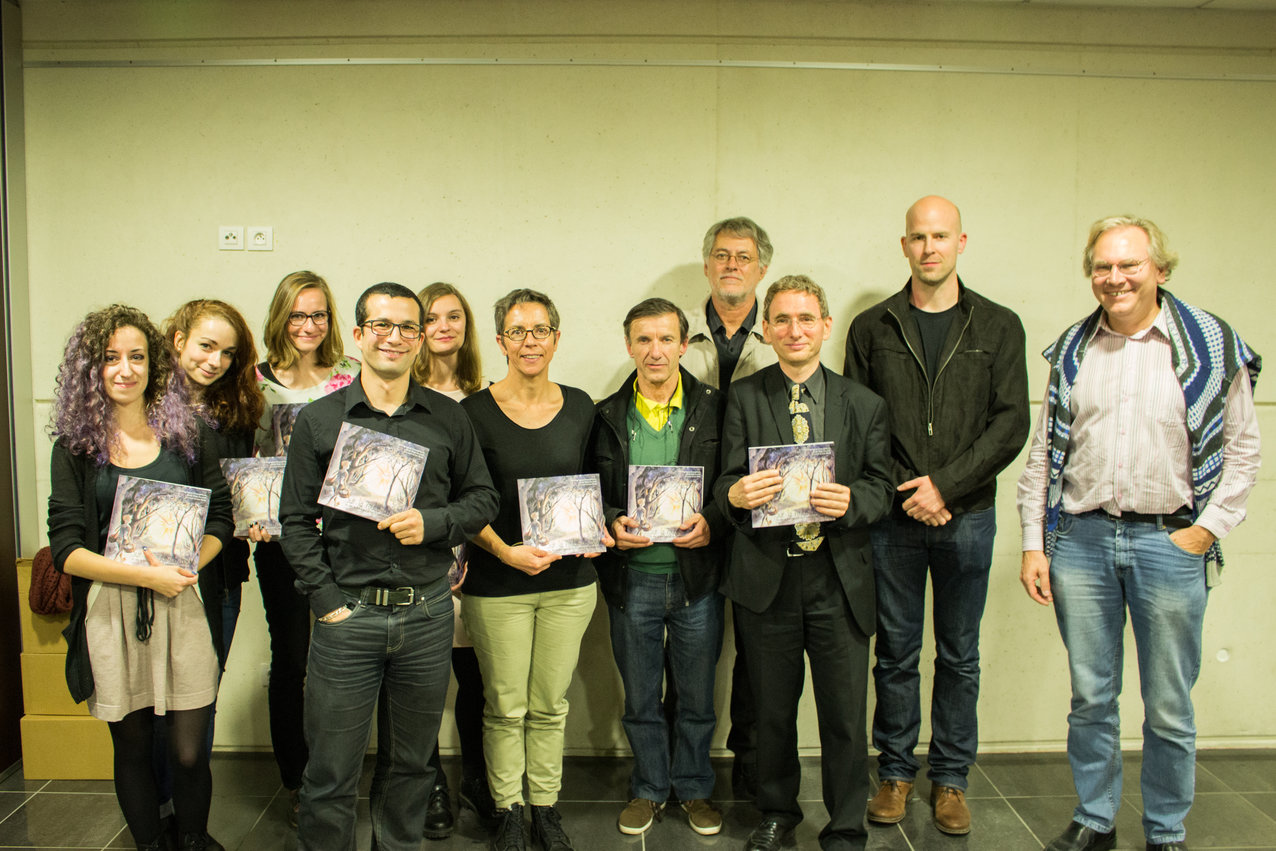Sur la route du boson Des idées de Higgs, Englet et Brout à la naissance d'une nouvelle particule
A printing house from Clermont-Ferrand contacted our lab with an idea in mind: write a french travel book on the Higgs boson discovery ... What a challenging and interesting project ! A team of four scientists of the lab and one illsutrator specialized into CERN and LHC related topics were involved to design this book. Emmanuel Busto, Frédérique Badaud, Jean Orloff and I took care of the content (what to describe, how to explain it to hit the as wider as possible audiance etc ...) while some nice and funny illustrations were designed by Lison Bernet. Also, four edition master students got involved at the begining of the project and were our "first calibration" in order to make our pedagogical approach were working ! It was also a great honor to have the book prefaced by Jean Iliopoulos!
In case you want to know more, feel free to follow us on facebook to get all the lastest news! Details about where to find the book are also given. If you have any question, you can simply contact me!
The story starts with a caracter who try to understand why so much attention is drawn around the Higgs boson discovery. How? By starting a long travel in Knowledege, the matter, the LHC and the giant detectors ! She will learn, together with the reader, why the Higgs boson discovery is a so deep step forward in the understanding of Nature. The usual aspects are described, like the composition of matter and its elementary constituents. Then she will try to understand the necessity of a new ingredient in a theoretical framework which is so nice and so inconsistent at the same time. To finish, all the technological and experimental challenges to validate this crazy idea of a field filling the whole space is discussed!
The Blaise Pascal University also supported this project and, once finalized, a presse conference was given within the University, where the book were presented. There is a quite famous exhibition in Clermont-Ferrand about the travel book in general. It's called the "Rendez-vous du Carnet de Voyage", in which we have presented the book.

Conferences and public events
A friend of mine, Julien Montillaud (researcher in astrophysics) invited me in his lab (UTINAM in Besancon, FRANCE) to speak about the Higgs boson. He said that physicists from his lab knew about the Higgs discovery (of course!) but the reason why the Higgs field is needed and its conceptual implications are not so deeply understood outside our community. I was happy to go there and explain the whole story of this amazing piece of science history.
If you are interested in having such a seminar in your lab or your university, don't hesitate to contact me!
I actually realised that the same seminar was pretty well suited for master students. That's why I am planning to give the same seminar explaining why the Higgs boson is so important for our understanding of particles in various universities or labs. I already went to the following places to tell the story:
Participation to other projects
It is definitely a great experience to explain particle physics to high or secondary school students. I participated to a couple of events allowing to describe our work to students, and make them share a particle physisict daily life. Two things: it is fun because you see (sometimes) in students eyes how crazy what we are doing is. And it's crucial because it can reveal vocations!
CERN Masterclass
The international CERN masterclass project aim to give a flavour of what is the job of particle physicist to many students around the world. It is centrally organized by CERN and performed in many labs where high school students come to have activities over a day. The morning is dedicated to general informations about particle physics, detectors and LHC experiments, while practical works take place during the afternoon. The idea is that each student of the class looks at about ten events using event display and classify each of them by eye (background and W/Z/H production). He or she should also keep track of relevant quantities like the angle between the two leptons. During a couple of hours, the whole class build the histogram of relevant distrubution by hand, event by event, and share their result with four other high schools in the world via video conference. In that way, they need to communicate their findings and put together their histogram to get more statistics ... And possibly rediscover the Higgs boson!
It is actually possible to play with collision recorded by ATLAS online, simply with a web browser. It represents a nice tool to give a flavour to anybody who is interested in analysing particle collisions!



